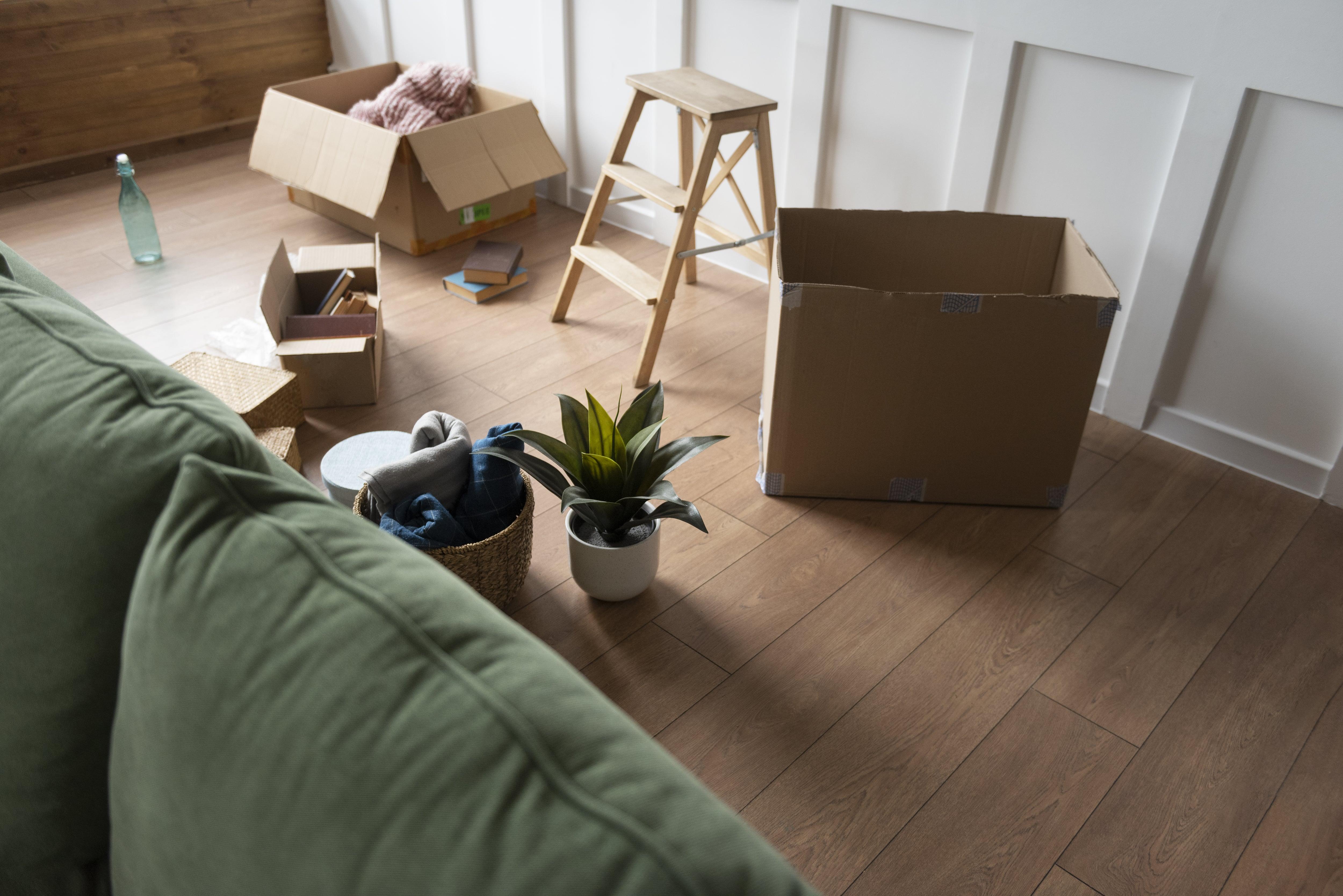Knowing common mistakes people make when preparing furniture for long-distance moves is a helpful starting point for tackling this process’s challenges. Procrastination frequently occurs when preparing furniture for long-distance moves, increasing the likelihood of rushed choices, overlooked details, and higher stress. Others might improperly pack furniture, choose insufficient insurance and protection, or work with the wrong transport company.
Many of the mistakes associated with moving furniture long-distance relate to underestimating the process’s logistics. Due diligence is of the utmost importance, as lengthier journeys present a greater probability of furniture getting exposed to stresses causing damage, like vibrations, bumps, and shifts. Additionally, these moves often include transfer points with different crews handling the shipment, and more handling means higher chances of damage. Preparing for long-distance furniture moving also includes contingency planning. In other words, you need to be ready for possibilities such as delays with resources like storage if move-in dates don’t align with your shipment’s arrival.
Learn the ins and outs of preparing your furniture for a long-distance move with the rest of our guide below.
Planning and Organizing Your Move
We’ve introduced how the complex logistics of preparing to move furniture long-distance requires a thorough plan, but a spreadsheet with details like tasks, deadlines, and contacts can streamline this plan and prevent you from feeling overwhelmed. You can further simplify your preparations by decluttering and prioritizing what furniture to keep, sell, donate, or discard.
Next, research how to schedule your move to avoid last-minute stress and ensure the availability of movers. Most people moving long-distance hire some level of professional help—so you’ll benefit from deciding if you’d like any assistance and, if so, to what degree. Moving companies can help at any stage of the relocation process. For example, you can hire a white glove moving service where a company moves your furniture long-distance from start to finish by packing, loading, transporting, unloading, and even setting up items at your new location. Others may hire professional assistance at certain stages, like packing and transport to ensure items are adequately prepared and moved with a commercial vehicle containing enough space.
Most moving companies recommend booking four to 12 weeks before your move date to ensure a quality match that fulfills your needs. Summer is generally the busiest time of year for residential moves, so if you’re moving furniture long-distance during this period, you’ll benefit from booking eight to 12 weeks ahead. Working with a broker can make it easier to source information like a competitive long-distance moving quote and if a company has required permits and paperwork. If you undertake this research, compare moving companies for reliability in specialty services like furniture shipping and verify their transport record and insurance.
Gathering the Right Packing Supplies
The most essential packing supplies for moving furniture long-distance include:
A basic tool kit
Sturdy boxes in various sizes
Bubble wrap
Packing paper
Stretch wrap
Packing tape
Furniture pads or moving blankets
Mattress protectors
Corner protectors
Plastic baggies
Dollies or hand trucks
Ratchet straps or rope
Labels and markers
Box cutter or scissors
Gloves
Trash bags for cleaning preparation messes
A basic tool kit is vital when preparing furniture for a long-distance move since you’ll likely need to disassemble items for packing. Sturdy boxes in various sizes help accommodate different small furniture pieces, and you’ll typically want to utilize reusable plastic bins instead of cardboard boxes, especially for fragile items since cardboard offers less durability. You can rent instead of purchasing reusable bins, but prioritize doing this if the rental company also has locations near your furniture’s destination; otherwise, returning the bins can be costly and inconvenient. Other companies specialize in providing large moving pods and portable storage containers suitable for transporting rooms of furniture.
Bubble wrap and packing paper help cushion items during transport and fill in a container’s gaps, while stretch wrap binds and keeps your possessions clean during shipping. Heavy-duty packing tape provides the best security for any necessary box sealing. Furniture pads on moving blankets provide cushioning and prevent scratching while moving larger furniture, and a mattress protector keeps your mattress clean and dry.
Corner protectors protect a furniture piece’s edges and corners from damage while moving with a soft barrier, and plastic baggies help you temporarily store smaller components from furniture disassembly, like bolts. However, you’ll want to label these plastic baggies to assist during unpacking and reassembly. Dollies or hand trucks assist in transporting heavy items, but moving companies will offer this equipment, along with resources like ratchet straps or rope for securing objects, if you hire help.
Cleaning and Disassembling Furniture
Best practices for cleaning and disassembling furniture vary based on factors like an item’s material. Cleaning is vital before disassembly since abrasive particles and coarse debris can scratch furniture surfaces during shipping. Furniture manufacturers will provide information on safely disassembling common furniture types like beds, tables, wardrobes, and desks, including tool recommendations through resources like printed guides.
Still, there are specific furniture types you’ll generally want to avoid disassembling for a long-distance move. Some inexpensive furniture from retailers like IKEA is designed for one-time assembly, and antique items can easily suffer damage during disassembly. Certain pieces, like pianos or pool tables, require professional assistance with specialized equipment. Avoid disassembling appliances like a dishwasher except for parts that may be removable and could experience movement during transit, such as shelves.
Protecting and Packing Furniture Properly
We’ve discussed how different furniture materials require varying cleaning techniques, and the same goes for packing.
Wood furniture benefits from moving blankets, furniture covers, and bubble wrap. The furniture should be well-covered, with the blanket or cover folded around the edges. Avoid plastic wrap when packing wood furniture, as the material can trap moisture and cause damage. Packing glass furniture includes wrapping pieces individually with packing paper to protect against scratches and cushioning items with multiple layers of bubble wrap, which should then be covered in a moving blanket.
You can wrap marble pieces in multiple layers of packing paper before bubble wrap and line its storage container with packing paper or foam inserts. After the item is in its crate, add more bubble wrap around it for extra cushioning. In addition to providing extra cushioning, more bubble wrap helps reduce shifting during transport. Components like drawers in a dresser need to be secured or removed to prevent movement during shipping.
Plastic wrap, moving blankets, and securing the object with stretch wrap work best for upholstered furniture. Corners of furniture pieces are especially susceptible to damage during long-distance moves, so specialized corner guards or protectors are highly recommended, no matter the material. Delicate items benefit from “fragile” or “this side up” labels when necessary.
Labeling, Inventory, and Documentation
Effective labeling systems when preparing furniture for a long-distance move extend beyond listing an item’s name on a box. For example, color coding or numbering item types, listing a room destination, and adding a content description can optimize loading and speed up your unpacking. Once you’ve labeled items, add them to your moving spreadsheet to create an inventory list and match them with their corresponding numbers and/or color coding.
High-quality photographs of furniture items and boxes can be insurance and reassembly references. For insurance, photographs are visual evidence of an item’s condition before the move in case you need to file a claim, and reassembly reference images confirm that you’ve correctly put a furniture piece back together.
Moving Day: Safe Handling and Loading Tips
Safe lifting and carrying techniques are critical to preventing injury and furniture damage when moving and loading items. A cornerstone technique is lifting with your legs instead of your lower back. Always lift with your legs by bending at your knees rather than your waist, which can cause lower back strain, and keep your feet shoulder-length apart to distribute weight across your body evenly. Furniture objects, even light ones, should generally remain below your waist level during handling for optimal control, balance, and stability. Items should also stay close to your body to prevent twisting and tendon or muscle pulls.
If you’re worried about sustaining an injury from lifting furniture for a long-distance move, consider hiring professional help for loading and unloading portions. Heavy furniture items typically go first when packing a truck, with soft items filling in gaps. You or a moving company will secure furniture within a truck by anchoring pieces tightly to built-in rails or hooks at the vehicle’s interior anchor points.
Unpacking and Reassembling at Your New Home
Once the furniture you’ve prepared reaches its destination, unpack essentials first before moving onto larger pieces when unloading a truck. Essentials are immediate necessities that include but aren’t limited to toiletries, medications, basic kitchen supplies, bathroom essentials, bedding, and linens. Next, you’ll start unloading essential furniture, such as your mattress and a comfortable place to sit. Lower-priority furniture items generally consist of decorations, bookcases, shelves, media stands, and coffee tables. Inspect items for damage as they’re unpacked if a moving company transported them to confirm whether you need to file an insurance claim.
Also Read: How to Plan a Stress-Free Move to a New Home
When to Consider Professional Help
Professional movers are especially helpful when transporting furniture long-distance. While hiring someone to pack your furniture can create feelings of unease, transporters may reject an insurance claim if you pack items they ship. Improper packing techniques increase the chances of damage, and movers often only guarantee coverage for items they pack. Since preparing furniture for a long-distance move includes complex logistics, consider hiring professional help if you’re working on a limited timeline or if you have several oversized, heavy, or valuable items.



